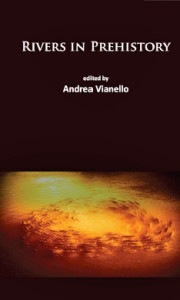By Andrea Vianello
Rivers have been the invisible “elephant in the room†in the archaeological literature, known to be there and even addressed directly in case of flooding or some other natural disaster, but largely absent from interpretations. Some rivers have been closely associated to specific civilisations, but the actual dynamics in the human-environment interactions are often too simplistic.
Settling near rivers can provide some advantages, but rivers are characteristically diverse, geographically and with the varying of seasons and the passing of years, and generally unreliable in their patterns. This situation has always stressed the relationship that humans have had with rivers, and resulted in a variety of responses. Ultimately, rather than explaining a single event, unique or repeated in time, rivers need to be approached as a dynamic entity that prompted constant responses from humans. The dynamism of this relationship is essential, and a key differentiator with seascapes and other wetlands, which are usually static environment with very long spans in between any significant change.
After researching the role of rivers in ancient cultures, no single pattern has emerged, and even responses to the same event have been different. This diversity is perhaps the most accessible of human-environment interactions, one that is strong even today since many contemporary cities are crossed by rivers, which represent the only natural space within the urban environment. Life on rivers is certainly a wet one, as floods and temporary wetlands can be expected, challenging the notion that a (permanent) wetland is a separate or distinctive environment. Rivers seem therefore an ideal case to investigate these interactions and determine the role of the most important resource of all, water, in human life. By adopting a consistent method to investigate them, it is possible to include rivers in our interpretations.
To see Andrea Vianello’s WARP30 PowerPoint click here:Â Rivers in Prehistory: Human-Environment Interactions on the Making

Leave a Reply